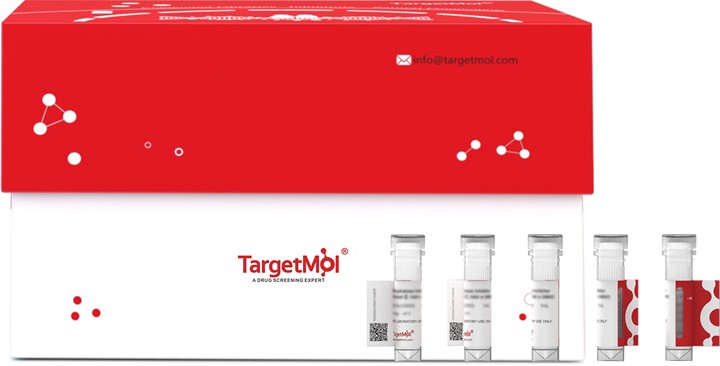 Your shopping cart is currently empty
Your shopping cart is currently empty
ALK-1 Protein, Mouse, Recombinant (hFc)
Activin Receptor-Like Kinase 1 (ALK-1) is a type I cell-surface receptor for the TGF-β superfamily of ligands, which mediates signaling of BMP9 (bone morphogenetic protein) and BMP10. ALK1 signaling is necessary for angiogenesis during embryogenesis, wound healing, and tumor growth. ALK-1 has a high degree of similarity in serine-threonine kinase subdomains, a glycine and serine rich region preceding the kinase-domain, and a C-terminal tail with other activin receptor-like kinase proteins. ALK-1 is mainly expressed in endothelial cells regulating proliferation and migration in vitro and angiogenesis in vivo. Mutations in ALK-1 as well as in endoglin are associated with hereditary hemorrhagic telangiectasia (HHT), suggesting ALK-1 plays a critical role for in the control of blood vessel development or repair.

ALK-1 Protein, Mouse, Recombinant (hFc)
| Pack Size | Price | USA Warehouse | Global Warehouse | Quantity |
|---|---|---|---|---|
| 10 μg | $35 | 7-10 days | 7-10 days | |
| 20 μg | $55 | 7-10 days | 7-10 days | |
| 50 μg | $110 | 7-10 days | 7-10 days | |
| 100 μg | $192 | 7-10 days | 7-10 days | |
| 200 μg | $342 | 7-10 days | 7-10 days | |
| 500 μg | $745 | 7-10 days | 7-10 days | |
| 1 mg | $1,180 | 7-10 days | 7-10 days |
Product Information
| Biological Activity | Activity has not been tested. It is theoretically active, but we cannot guarantee it. If you require protein activity, we recommend choosing the eukaryotic expression version first. |
| Description | Activin Receptor-Like Kinase 1 (ALK-1) is a type I cell-surface receptor for the TGF-β superfamily of ligands, which mediates signaling of BMP9 (bone morphogenetic protein) and BMP10. ALK1 signaling is necessary for angiogenesis during embryogenesis, wound healing, and tumor growth. ALK-1 has a high degree of similarity in serine-threonine kinase subdomains, a glycine and serine rich region preceding the kinase-domain, and a C-terminal tail with other activin receptor-like kinase proteins. ALK-1 is mainly expressed in endothelial cells regulating proliferation and migration in vitro and angiogenesis in vivo. Mutations in ALK-1 as well as in endoglin are associated with hereditary hemorrhagic telangiectasia (HHT), suggesting ALK-1 plays a critical role for in the control of blood vessel development or repair. |
| Species | Mouse |
| Expression System | HEK293 Cells |
| Tag | C-hFc |
| Accession Number | Q61288 |
| Synonyms | TSR-I,TGF-B superfamily receptor type I,SKR3,Serine/threonine-protein kinase receptor R3,ALK-1,ACVRL1,Activin receptor-like kinase 1,activin A receptor type II-like 1,activin A receptor |
| Amino Acid | Asp23-Pro119 |
| Construction | Asp23-Pro119 |
| Protein Purity | Greater than 95% as determined by reducing SDS-PAGE. (QC verified) |
| Molecular Weight | 55-60 KDa (reducing condition) |
| Endotoxin | < 0.1 ng/µg (1 EU/µg) as determined by LAL test. |
| Formulation | Lyophilized from a solution filtered through a 0.22 μm filter, containing PBS, pH 7.4. |
| Reconstitution | Reconstitute the lyophilized protein in distilled water. The product concentration should not be less than 100 μg/ml. Before opening, centrifuge the tube to collect powder at the bottom. After adding the reconstitution buffer, avoid vortexing or pipetting for mixing. |
| Stability & Storage | Lyophilized powders can be stably stored for over 12 months, while liquid products can be stored for 6-12 months at -80°C. For reconstituted protein solutions, the solution can be stored at -20°C to -80°C for at least 3 months. Please avoid multiple freeze-thaw cycles and store products in aliquots. |
| Shipping | In general, Lyophilized powders are shipping with blue ice. Solutions are shipping with dry ice. |
| Research Background | Activin Receptor-Like Kinase 1 (ALK-1) is a type I cell-surface receptor for the TGF-β superfamily of ligands, which mediates signaling of BMP9 (bone morphogenetic protein) and BMP10. ALK1 signaling is necessary for angiogenesis during embryogenesis, wound healing, and tumor growth. ALK-1 has a high degree of similarity in serine-threonine kinase subdomains, a glycine and serine rich region preceding the kinase-domain, and a C-terminal tail with other activin receptor-like kinase proteins. ALK-1 is mainly expressed in endothelial cells regulating proliferation and migration in vitro and angiogenesis in vivo. Mutations in ALK-1 as well as in endoglin are associated with hereditary hemorrhagic telangiectasia (HHT), suggesting ALK-1 plays a critical role for in the control of blood vessel development or repair. |
Dose Conversion
Calculator
Tech Support
| Size | Quantity | Unit Price | Amount | Operation |
|---|

Copyright © 2015-2025 TargetMol Chemicals Inc. All Rights Reserved.



